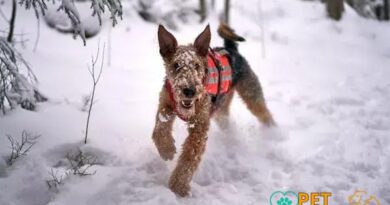O que é fuga em casa
What is Home Escape?
Home escape refers to the behavior exhibited by dogs when they attempt to leave their home environment, often driven by instinctual urges or environmental triggers. This phenomenon can manifest in various ways, including digging under fences, jumping over barriers, or simply bolting out of an open door. Understanding the reasons behind this behavior is crucial for dog owners who want to ensure the safety and well-being of their pets.
Common Reasons for Home Escape
There are several reasons why a dog may try to escape from home. One of the primary motivations is boredom. Dogs are social animals that require mental and physical stimulation. When left alone for extended periods, they may seek entertainment outside the confines of their home. Additionally, anxiety and fear can drive a dog to escape, particularly during thunderstorms or fireworks. Understanding these triggers can help owners mitigate escape attempts.
Signs Your Dog Might Escape
Recognizing the signs that your dog may attempt to escape is essential for prevention. Common indicators include excessive barking, digging, or pacing near exits. If your dog exhibits destructive behavior, such as chewing furniture or scratching at doors, these may also be signs of restlessness that could lead to an escape attempt. Observing your dog’s behavior closely can help you identify potential issues before they escalate.
Preventing Home Escape
Preventing home escape involves creating a secure environment for your dog. This can include installing higher fences, using barriers, or ensuring that doors and windows are always closed and secured. Additionally, providing ample exercise and mental stimulation can significantly reduce the likelihood of escape attempts. Engaging your dog in regular playtime and training sessions can help keep them content and less inclined to seek freedom outside.
Training Techniques to Reduce Escape Behavior
Training is a vital component in addressing escape behavior. Positive reinforcement techniques can be employed to teach your dog reliable recall commands, ensuring they return to you when called. Additionally, desensitizing your dog to triggers that cause anxiety can help reduce their urge to escape. Consistent training and socialization can foster a sense of security in your dog, making them less likely to feel the need to leave home.
The Role of Exercise in Preventing Escapes
Regular exercise plays a significant role in preventing home escape. A well-exercised dog is typically calmer and less prone to boredom, which can lead to escape attempts. Daily walks, play sessions, and interactive games can provide the physical and mental stimulation your dog needs. Incorporating activities that challenge your dog’s mind, such as puzzle toys or agility training, can also help keep them engaged and satisfied.
Understanding Your Dog’s Instincts
Understanding the natural instincts of your dog can provide insight into their escape behavior. Many breeds have strong prey drives or territorial instincts that may compel them to roam. Recognizing these instincts allows owners to take proactive measures, such as providing safe outlets for these behaviors through structured play or training. By acknowledging your dog’s natural tendencies, you can create a more harmonious living environment.
When to Seek Professional Help
If your dog’s escape attempts become frequent or dangerous, it may be time to seek professional help. A certified dog trainer or behaviorist can assess your dog’s behavior and provide tailored strategies to address the issue. They can help identify underlying anxiety or behavioral problems that may be contributing to the escape attempts, offering solutions that are specific to your dog’s needs.
Creating a Safe Home Environment
Creating a safe home environment is crucial for preventing escape. This includes ensuring that your yard is secure, with no gaps or holes that your dog could exploit. Additionally, providing a comfortable and engaging space inside your home can help reduce the urge to escape. Consider creating a designated area with toys, beds, and other comforts that make your dog feel at home and less inclined to seek adventure outside.




